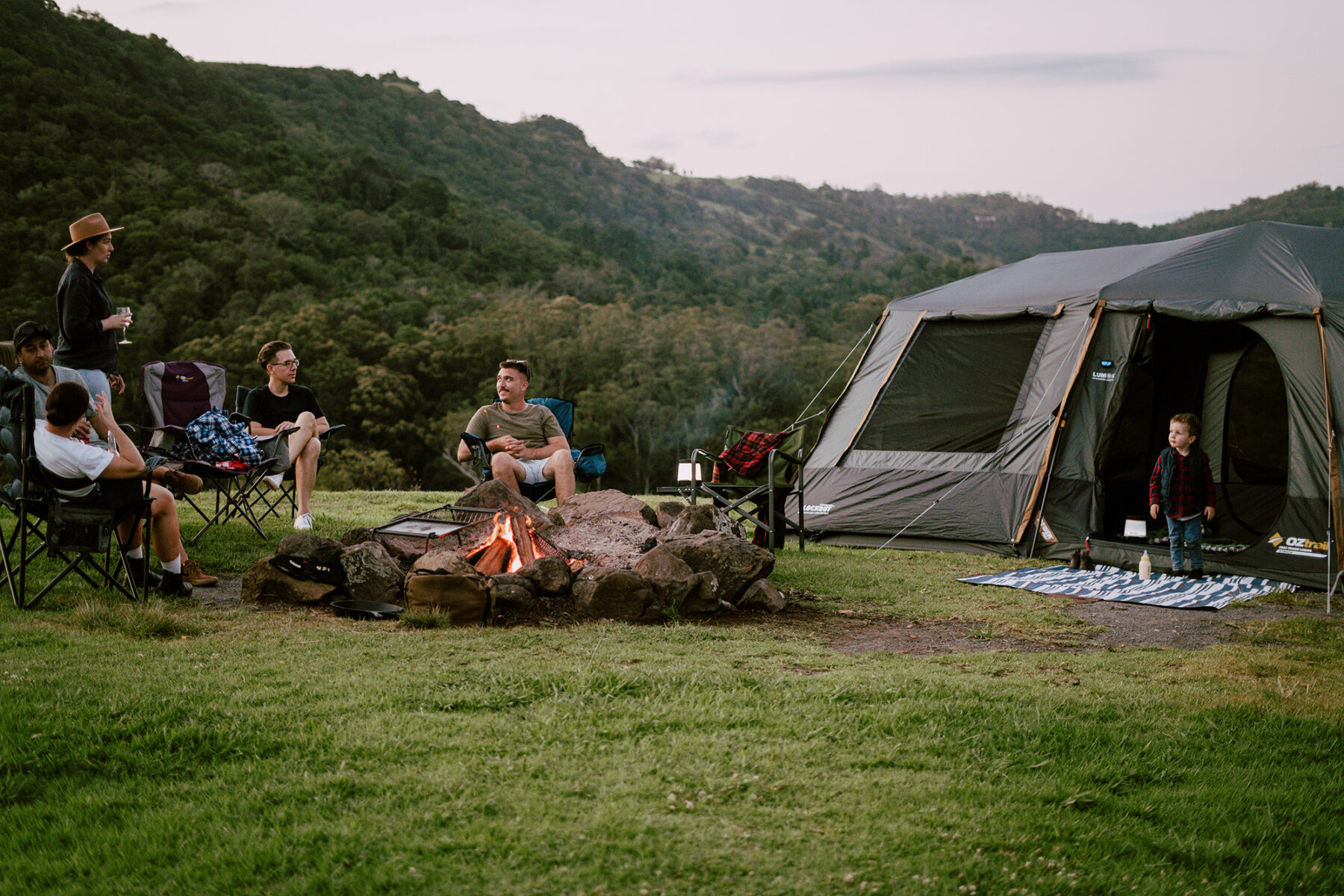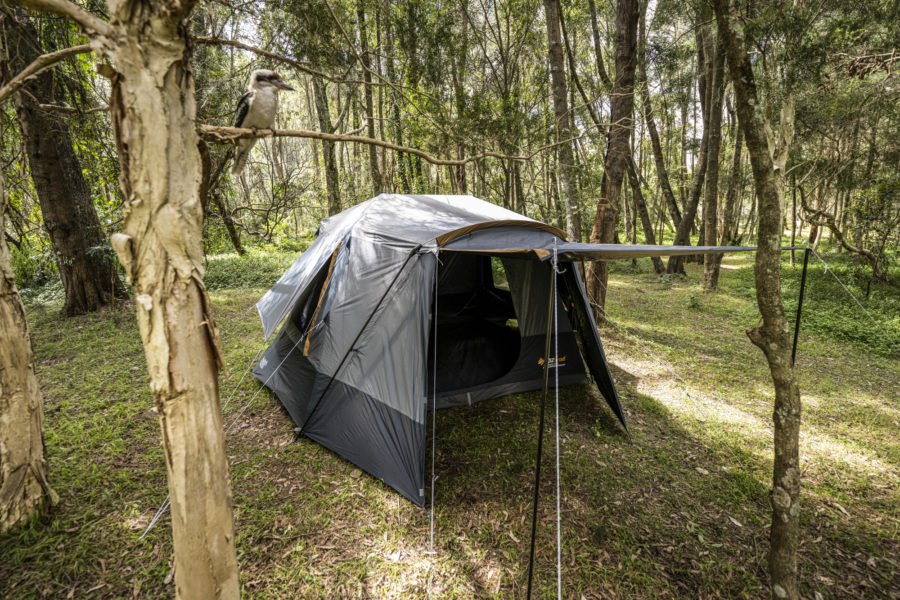The humble tent is still the most popular accommodation choice for road-tripping families, offering plenty of shelter bang for your bucks, whether for a weekend escape or that epic around-Oz adventure. The wide variety – large and tough canvas tourers; multi-room family palaces – adds credence to that cliché of the buyer being spoiled for (nearly too much) choice.
Nothing beats getting away for a few nights (or preferably longer) camping with the family. It is a brilliant way to relax – made even more so when you know your accommodation setup for those nights away is reliable, spacious, and well-proved in the field. For most of us – even in this age of ever-fancier camper-trailers and off-road caravans – this invariably means a tent. Whether you’re a solo traveller, a couple, or you’ve brought your brood with you, there’s a dizzying array of tents on the market, some of which will be perfectly suited to how you wish to travel and explore when in remote areas. It’s just a matter of finding the right one.
Fit for purpose
Tents come in a variety of configurations, from large dome tents with extra rooms/annexes/sheltered areas, to more traditional pavilion style tents and centre-pole tourers, through to tents that blend the attributes of all these together and add an internal ‘quick setup’ frame (OZtrail’s Fast Frame tent range is an excellent example; the Oztent is another) – and then there’s the rooftop tent and its variants (more on these later). Most tents pack into sturdy storage bags, although the Oztent will require packing on your roof, due to its unique design.
As well as the configuration and the material used in the construction, you need to look at overall build quality, internal height (you don’t want to be walking around inside a tent bent over like Quasimodo – that soon gets tiring) and, most important in Australia, how much ventilation the tent offers. Remember, with the entire family dossing down inside such a small, enclosed space, you’re going to want plenty of fresh air, not only for odour control but to minimise condensation inside the tent. There’s nothing worse than waking up in a wet sleeping bag due to moisture build-up inside the tent.

Look for a tent that has plenty of ventilation via mesh-covered windows on each wall of the tent to promote cross-breezes and check that these windows have a rain awning/cover that means you can keep them open in a rainstorm – always handy as that’s when things get humid inside the shelter.
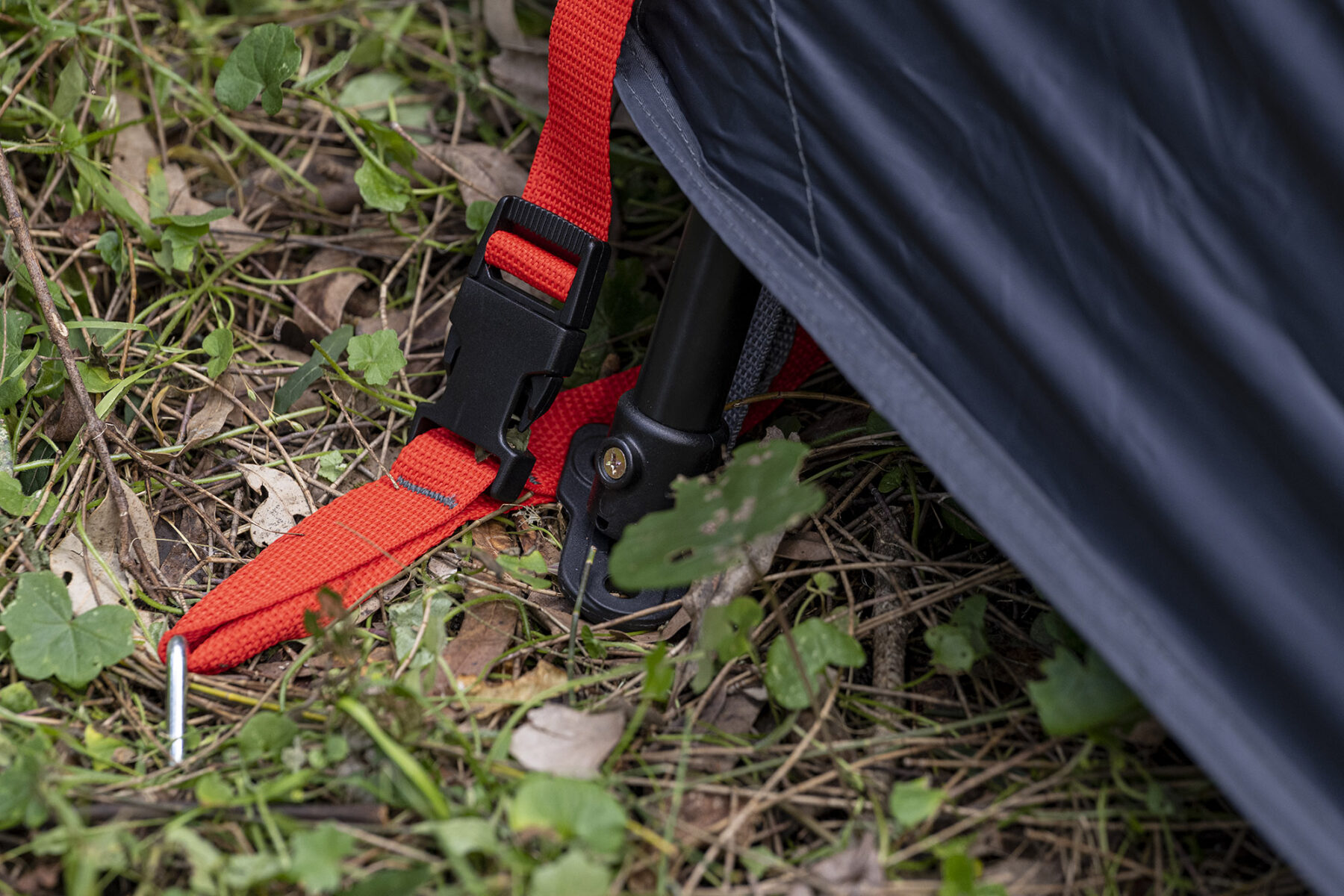
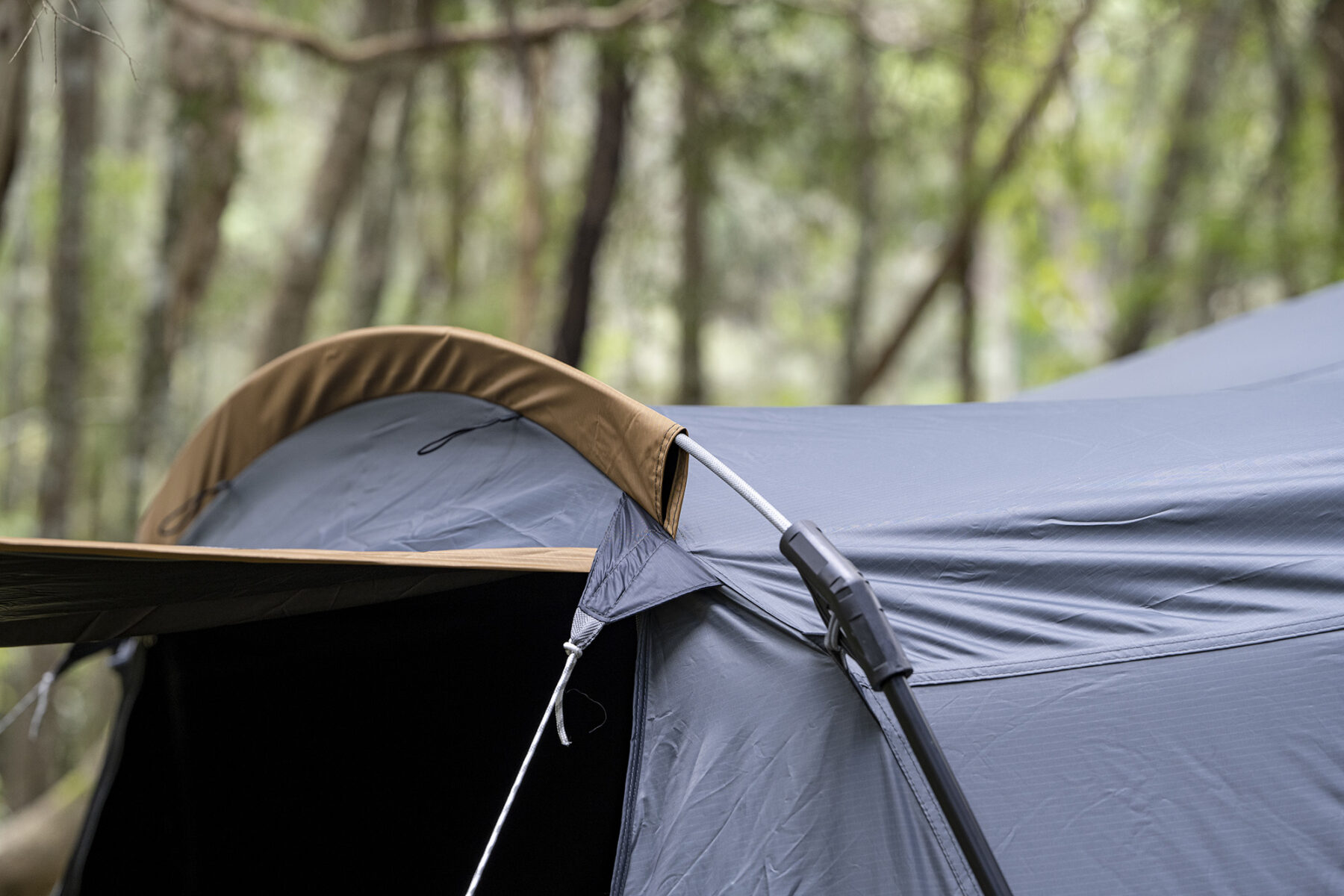
Regarding build quality, along with checking that the fabrics used are tough/waterproof enough for Aussie conditions, check whether the tent uses metal (aluminium, steel) poles or fibreglass. If possible, steer clear of a tent with fibreglass poles as they are more prone to splintering and breaking. Good quality materials are a given; ripstop poly/cotton canvas is heavier but more durable than synthetic material. However, poly/cotton canvas does take longer to dry and is heavy when wet, making it difficult to pack up in miserable conditions. Plus, in general, a synthetic material tent is a lot cheaper than the equivalent poly/cotton canvas one and, as mentioned earlier, if you’re only heading out a few times a year, they will last for quite a while.
Size does matter
What size – or capacity – tent to go for will depend entirely on your needs, i.e., if you’re travelling solo or two-up, you may look at a smaller, lighter, more compact hiking style tent. For most travellers, though, a large tent capable of sheltering the entire family will be the best option. It is here that you need to account for a few things, though, starting with what tent manufacturers claim is the amount of people can fit in a particular model, compared to what you can actually fit in there. By this, we mean that in nearly all cases, a “4-Person” tent is actually more suited to housing three adults in something more resembling space and comfort. To this end, if you are looking for a tent for a family of four, we’d strongly advise going up a ‘size’ to a 6-Person model. That additional space provided, both inside and also in the entrance/vestibule area, can mean the difference between occupants being right on top of each other, squeezed in the tent, and something more spacious and comfortable if/when full. And yeah, it’ll stop more than a few arguments, too.
Modern tent design means that the weight, size and shape of a 6-Person tent, compared to a 4-Person, is relatively minimal in the bigger scheme of things – always a bonus when it comes to not only fitting folks in easily, but also when packing in your vehicle. Some tents fold up into several smallish bags that can be packed around other gear in your vehicle’s cargo area, while others will pack in size/shape that mean they can only be transported via your roof-racks.
The size of the tent you’ll need will obviously depend on the size of your travel group/family, but you should also consider how long your trips will be; the longer they are, the more gear you’ll likely need to stow in the tent. And this is where the larger tent offers more. Opt for a bigger tent and you will likely score separate ‘rooms’ and also an awning/vestibule area in which you can store essential gear, such as bags, shoes and, of course, the Esky or fridge/freezer. A number of larger family tents offer sectioned areas where a simple zipped ‘wall’ separates the kids’ area from the parents, and often incorporate a central ‘room’ as well – handy if the unfortunate happens and you have to eat inside the tent due to rain.
The material world
Tents are made using a wide variety of materials; lighter-weight synthetics, such as ripstop nylon and polyester fabrics are popular, as is poly/cotton canvas (a natural material – these will also often feature ripstop technology for additional durability as well). Which material you use will depend on, er, usage. By this we mean that, if your family camping adventures are generally weekends away, or only a few times a year, then the lighter weight (and more compact packed size) of a synthetic-fabric tent may be more suited. As a rule, synthetic-material tents feature a lot lighter (read: thinner) fabric that still offers excellent waterproof levels, at the expense of slightly less ‘breathability’ or airflow through the tent.
These thinner fabrics are not as tough as the thicker, heavier woven threads of poly/cotton canvas, but do help ensure that mammoth 12-Person tent you just purchased doesn’t require a separate trailer in which to carry it. However, the trade-off on this smaller packed size (and lighter weight) is that synthetic fabrics aren’t as robust when it comes to UV rays from the sun and the Durable Water Repellency (DWR) treatment (designed to keep the rain out, of course) can break down over time with exposure to the sun. If you’re an occasional camper, this won’t matter, but a regular camper needs to add this to the list of pros/cons. Abrasive material, such as sand, sticks, gravel, etc., is also more likely to damage a thin synthetic-fabric tent than a poly/cotton canvas equivalent.
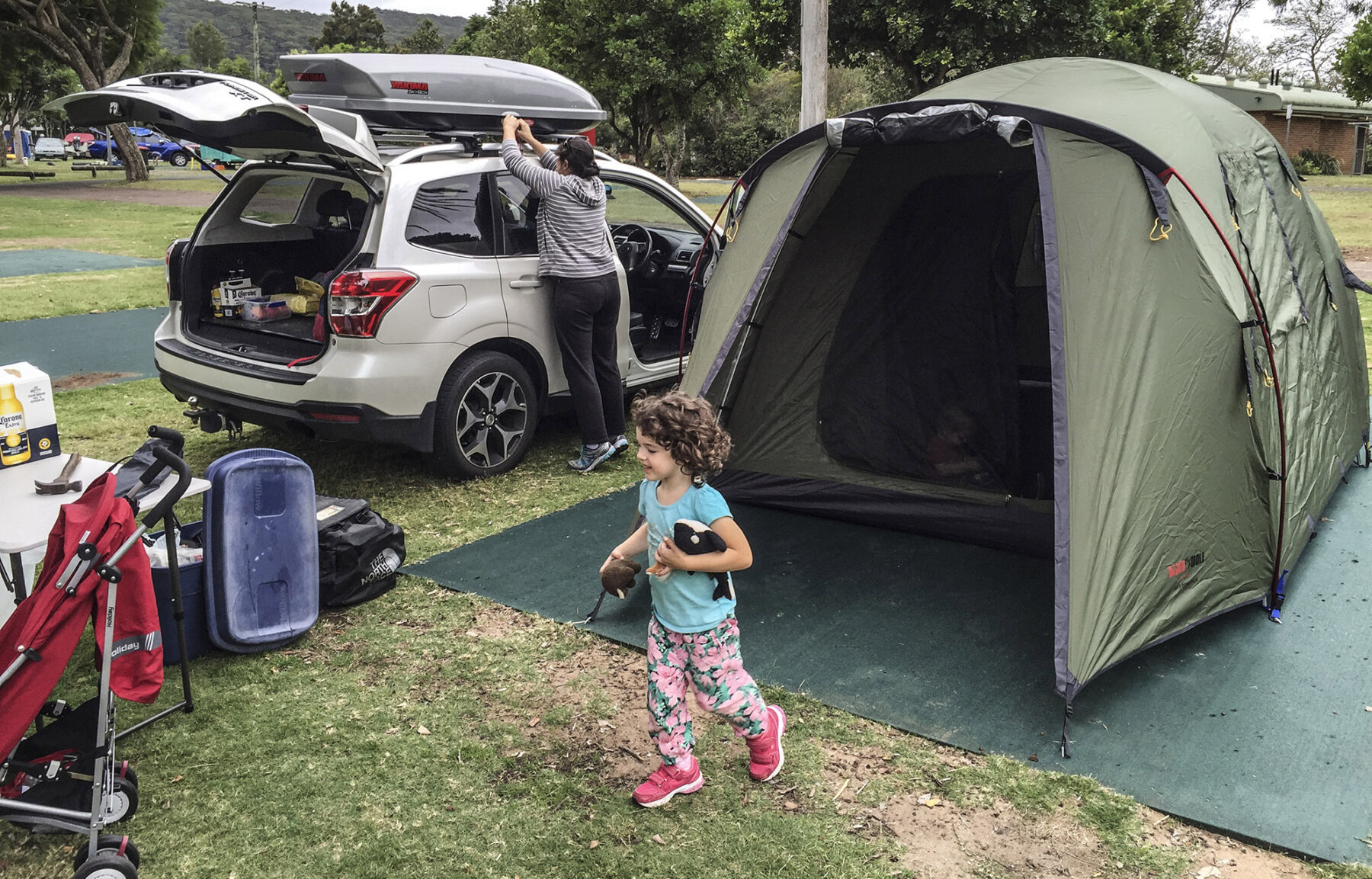
There are numerous nylon/polyester family tents on the market and these generally follow the theme of the more you pay, the better the performance. Besides the lighter weight and the smaller packed size, you will usually gain more features in these tents per their size, from separated rooms with zip doors, through to numerous vents, compared to the heavier canvas touring jobbies. Be sure to check what material has been used for the floor. This can range from a tough tarp-style material, (or heavy-duty vinyl) or just be a thicker version of the outer fly of the tent. And while you’re checking out tent floors – and this applies to all tent types – check to see if the floor has seams and how they are sealed (taped, liquid welded, etc.) Ideally, regardless of material used, we’d recommend a tent with a bathtub-style floor, where stitching joining the floor and upper tent together is above ground level, thus eliminating potential water ingress.
If you opt for a poly/cotton canvas tent, be prepared for them to take up a significant amount of space when stowed in your vehicle, due to the inherently thicker/denser fabric used. It is this outright toughness of a poly/cotton canvas touring tent that is its big appeal, however, and they will last many years if cared for. Most models use a similar (or same) robust ripstop poly/cotton canvas material that is mildew/rot-resistant, and heavy-duty vinyl (for the floor) as a swag, so they will last many years. This material offers slightly better shade/cooling qualities, but is thicker and, thus, takes up more space when packed than an equivalent synthetic tent.


One exciting new development in synthetic tents is Oztrail’s BlockOut technology. This is basically a coating on the tent’s outer fly that is claimed to reduce light by “up to 95 per cent”, which sounds great. More appealing is the fact that, by doing this, you should also see a noticeable drop in temperature inside the tent. Oh, and yeah, you will get to sleep in most likely as well, thanks to that darker interior. Plus, tent manufactures have all developed more effective ventilation systems for their family tents that, again, adds comfort for occupants. Winning!
Going big for family tent bonus points
The size of the tent you’ll need for family getaways obviously depends on the size of your clan but be sure to also consider how long your trips will be; the longer they are the more gear you’ll need to stow in the tent.
In its erect state, there’s more to take into consideration than simply the overall size of the tent; does it have separate sleeping quarters, a vestibule/wet area and/or an awning? Features such as these can be extremely important to ensure everyone gets a good night’s sleep, especially if there’s inclement weather.
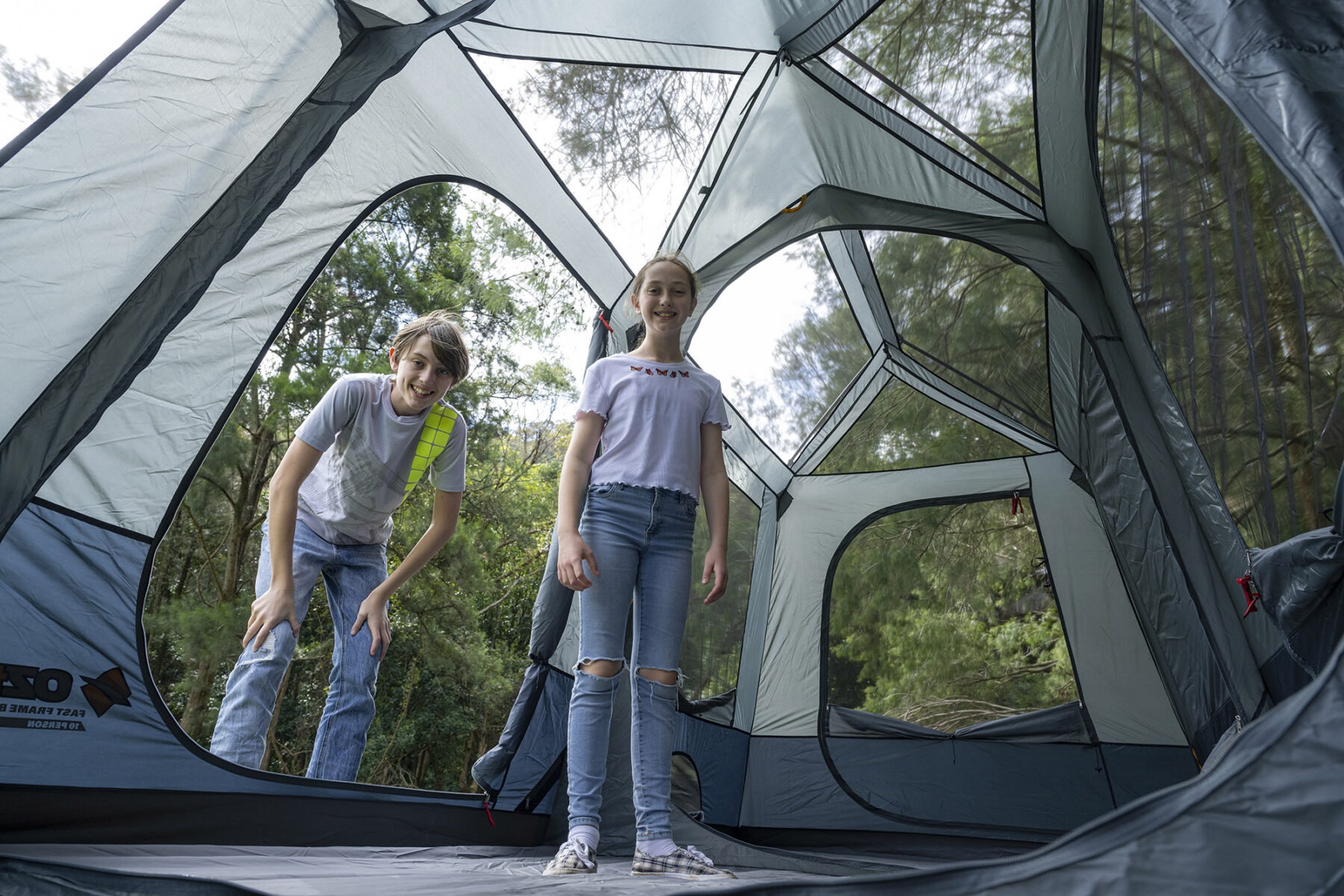

Although you won’t be lugging it around on your back, weight is still something to consider in a family tent, especially with many national park campsites located away from the vehicle parking area. You’ll not only need to be able to easily put it in (or on top of) your vehicle and then take it out again to manoeuvre it into position, but you’ll need to ensure it doesn’t tip your vehicle’s payload into the red zone. You’d be surprised at just how little weight many modern vehicles can legally carry; your vehicle’s payload can soon be exceeded just by filling it with occupants, fuel, and a moderate amount of luggage. By the time you throw in camping gear such as a fridge/ice box, food, water, some tools and vehicle recovery gear, you can soon be over that safe and legal limit.
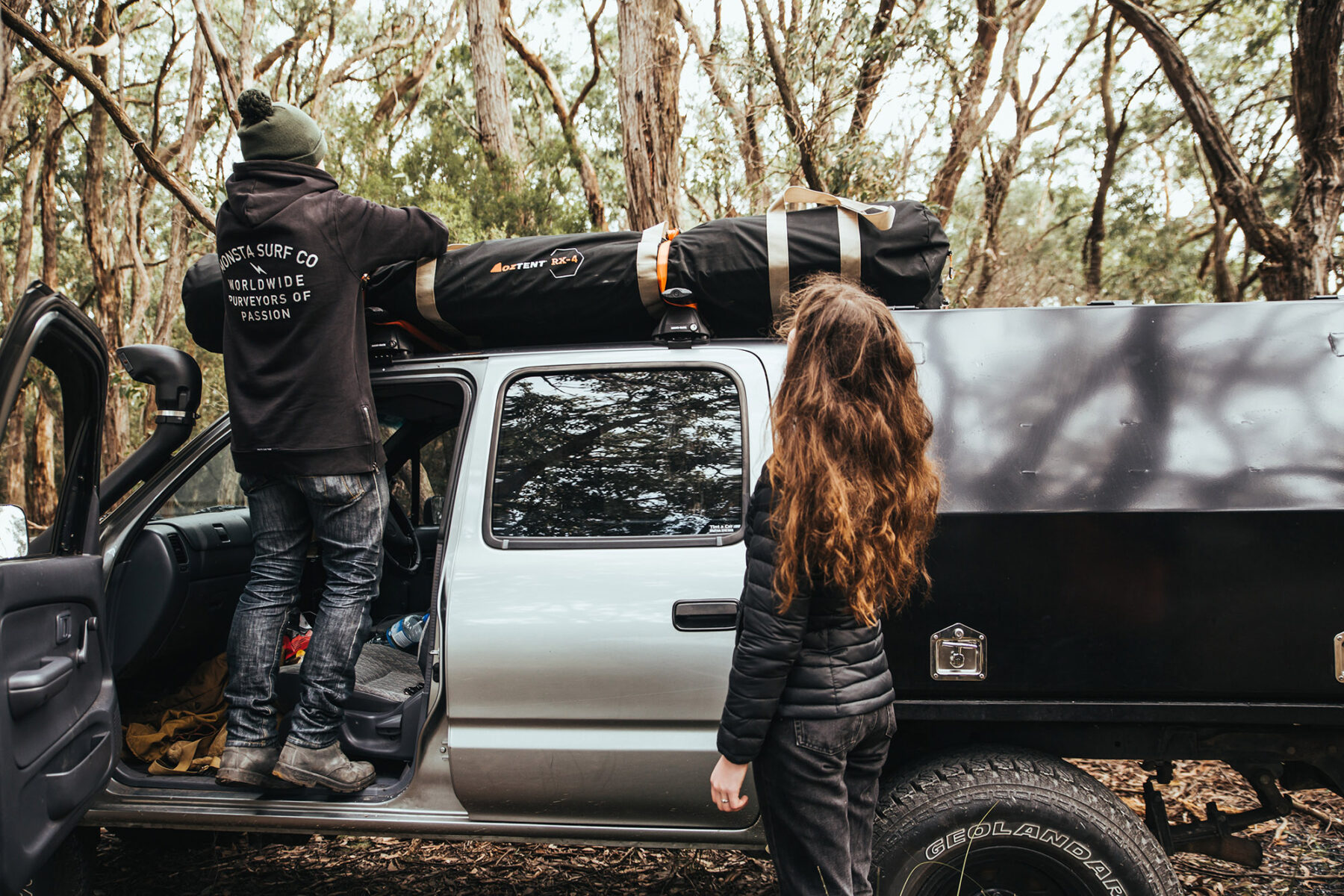
Finally, it’s important to examine the size and shape of the tent when it is packed for transporting to make sure it will fit in your vehicle. Some tents fold up into several smallish bags that can be packed around other luggage in your vehicle, while others will pack in such a manner that they can only be transported on your roof racks; what you choose will depend on the size and design of your vehicle and how you intend to transport the tent.
Movin’ it
If your intention is to move camp every night, check out a centre pole (pavilion style) tent or one of the many internal-frame tents on the market. Chances are that features such as an awning and separate wet area/vestibule – or even separate rooms – could be more important to you.
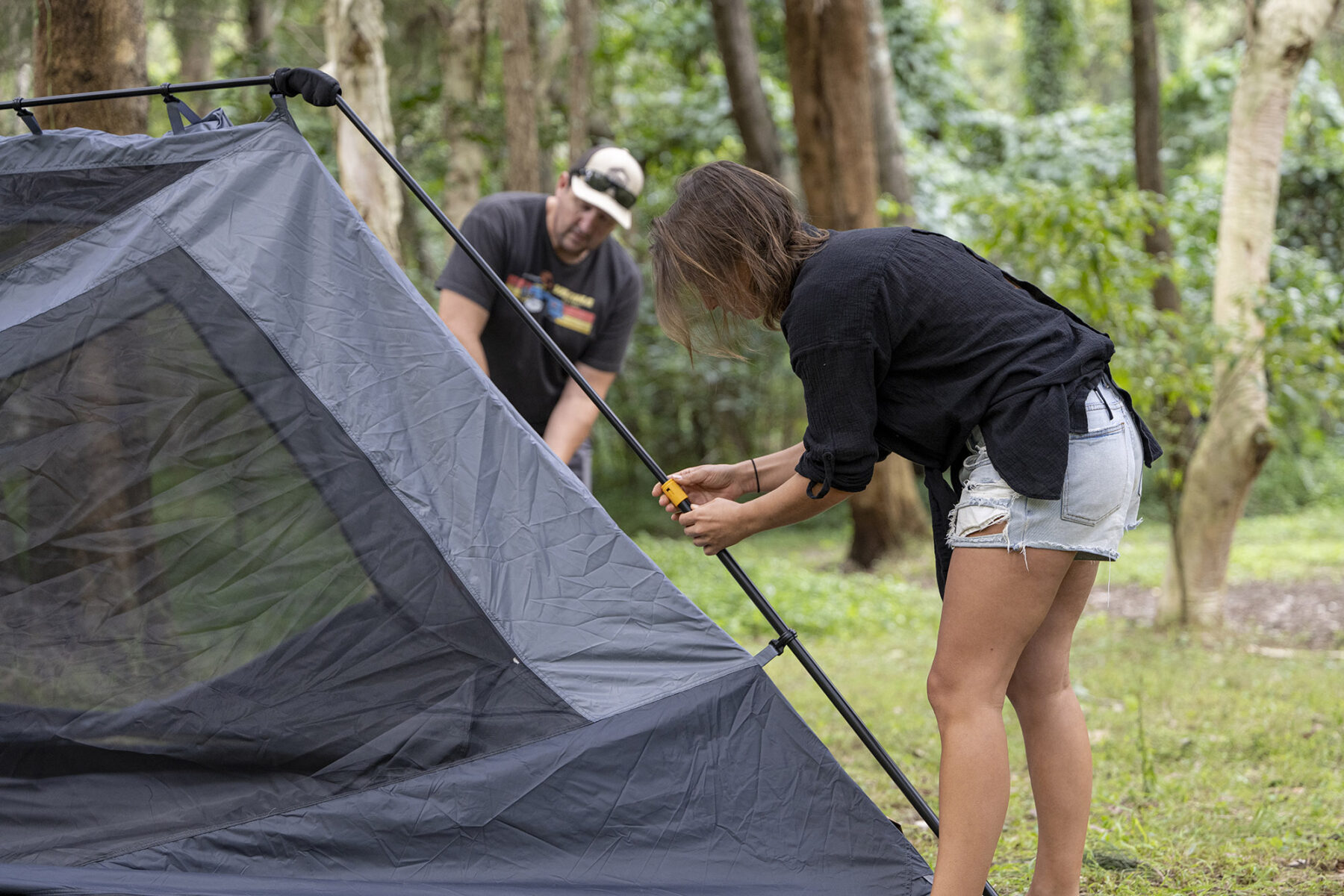

Oztrail’s Fast Frame tent range (from four to 12-person capacities) combines synthetic fabric with a hubbed internal frame for a speedy setup (an OZtrail 10-person tent can be – no lie – up and ready in five to 10 minutes). The Oztent range caters for occupant numbers from two to five and all models use a clever hinged fold-out design that is, literally, 30 seconds to set up. The fast setup times of these tents turns that dreaded morning pack-up into a slightly less laborious chore and the hubs/poles in these tents are all overbuilt to ensure reliability in the field.
A centre-pole tent is nearly as quick; pegging the tent down and then lifting up the support pole in the centre is fast, the only caveat with these types of tent is that you lose that centre space due to the support pole, plus they are narrower at the top due to that pyramid profile. It also means it’s essential that the windows have awnings otherwise you cannot keep them open during rain as, due to the angled slope of the tent wall, the window (and interior of the tent) are exposed directly to the rain.
Choices are endless in the family tent world
Yep, there’s a plethora of tent options out there, which may sound daunting for the buyer but is actually a good thing: there will be, at the least, a few models that are the perfect fit for your requirements.
For adventurous families who are more focused on weekends/week-long escapes into the bush during holiday periods, any/all of the tent styles mentioned here would work. The lighter-weight synthetic models are an appealing cost-effective option that are generally easier to pack in your rig, easier to handle around camp, and are still plenty tough enough for most weather conditions you’ll cop – especially on the eastern seaboard.
And don’t forget, no matter what tent type you end up choosing, they all signify one thing: having a cracking time camping and exploring this mighty country of ours!
